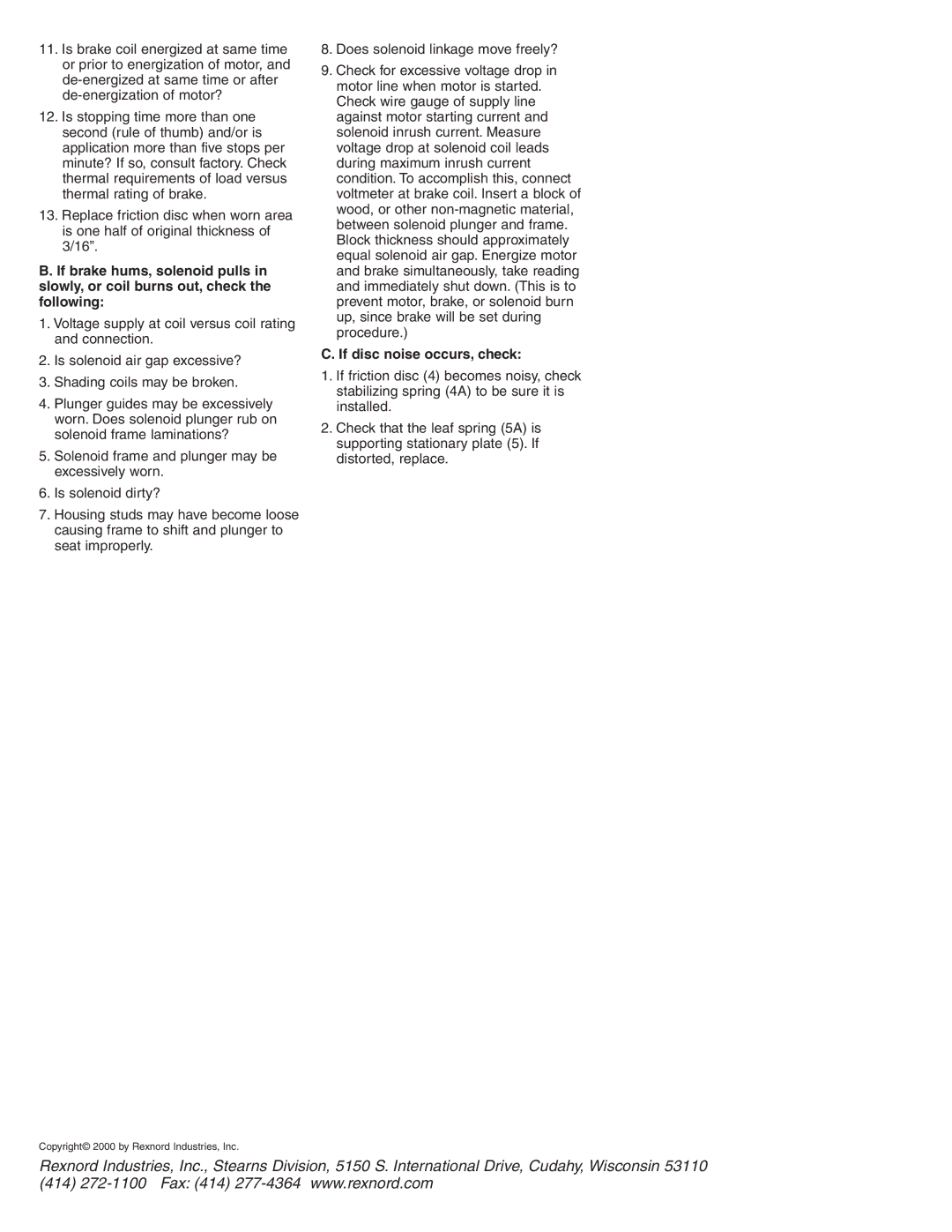11.Is brake coil energized at same time or prior to energization of motor, and
12.Is stopping time more than one second (rule of thumb) and/or is application more than five stops per minute? If so, consult factory. Check thermal requirements of load versus thermal rating of brake.
13.Replace friction disc when worn area is one half of original thickness of 3/16”.
B. If brake hums, solenoid pulls in slowly, or coil burns out, check the following:
1.Voltage supply at coil versus coil rating and connection.
2.Is solenoid air gap excessive?
3.Shading coils may be broken.
4.Plunger guides may be excessively worn. Does solenoid plunger rub on solenoid frame laminations?
5.Solenoid frame and plunger may be excessively worn.
6.Is solenoid dirty?
7.Housing studs may have become loose causing frame to shift and plunger to seat improperly.
8.Does solenoid linkage move freely?
9.Check for excessive voltage drop in motor line when motor is started. Check wire gauge of supply line against motor starting current and solenoid inrush current. Measure voltage drop at solenoid coil leads during maximum inrush current condition. To accomplish this, connect voltmeter at brake coil. Insert a block of wood, or other
C. If disc noise occurs, check:
1.If friction disc (4) becomes noisy, check stabilizing spring (4A) to be sure it is installed.
2.Check that the leaf spring (5A) is supporting stationary plate (5). If distorted, replace.
Copyright© 2000 by Rexnord Industries, Inc.
Rexnord Industries, Inc., Stearns Division, 5150 S. International Drive, Cudahy, Wisconsin 53110 (414)
